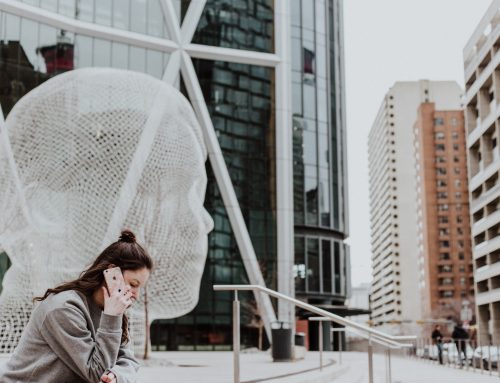How Not to be an Artist

“Master Works” by Larry Mos
As an artist turned illustrator turned graphic designer and now coursing to a career in art direction, my style has changed but my creative approach has stayed more or less the same. Over the years I learned that with each different title, my goal for the creative was slightly different.
Artists create to seek truth or nothing at all
As an artist you seek truth, understanding of yourself and the world. You can make art to understand your materials. You can create art to understand color. You may or may not be concerned if your message is clear, but it doesn’t matter. It’s your craft; it’s your art. It can be intuitive, it can be thought out. It’s your personal journey.
Illustrators tell stories
Illustrators tell stories and aim to communicate visually. The medium and craft is just as important as the message. You like to draw and paint. The line between artist and illustrator is blurred, you can easily also be considered an artist.
Graphic Designers organize information
Graphic designers are organizers of information. They organize it in a way to communicate their viewer the message. They understand layout, typography and color. They sometimes use illustration and design together to communicate a message.
Art Directors are versatile
Art directors are concerned with style, message and tone to communicate in advertising to their target audience. They are versatile across all media outlets to get their message across. They can also be considered designers, photographers, illustrators, web developers and animators.
What I have learned is that even thought my career has changed, my personal creative manifesto hasn’t. What makes each person unique is the way they communicate may be different from how someone else communicates. My medium of choice and the way I organize information is different than how someone else may approach a project. The only profession that doesn’t care if the receiver is able to decode the message is the artist. Ironically, that is the most important thing to me, and I do believe that still makes me an artist. My personal creative manifesto:
- Communication is most important and you can sometimes communicate the wrong message without realizing it.
If I have something very specific I am trying to get across, I always show it to someone else who has nothing to do with the project. Sometimes I have unintentionally turned the message around because my desire to execute my creative idea, even though off track, has blurred my objective. - You can’t force great ideas.
Great ideas often don’t happen if they are forced. Those genius moments don’t come around in every project. If they don’t, good craft helps. - Get off the couch. If you can’t afford to travel, figure it out.
My best ideas have come from traveling. Traveling helps you understand the world, how to communicate better and communication is key. - Challenge yourself, not just creatively.
Do things you wouldn’t normally do. If your friend asks you to go camping in West Virginia to bird-watch and it seems like the worst thing in the world, do it. I truly believe this helps you see the positive side of things and you may even wind up liking it. When I do creative brainstorming, I don’t eliminate ideas off the bat. See the positive side of it, flip it around and re-address it. It could be a beautiful thing. - Love similes, metaphors and visual draw-ins.
Similes and metaphors help you see something from what it really is and allows your viewer to dig deeper. Your message doesn’t have to be so obvious. Visuals are always more fun when they are one thing from far away, but when you viewer comes in closer it surprises them with another. - Don’t take yourself and your work too seriously.
If you are having fun, then people will love what you do. If you are constantly straining and not enjoying it, perhaps it’s not for you. - Everything has already been done and no one is 100% original.
I learned this one the hard way. I always tried to be 100% original in undergrad and I finally had a famous professor tell me that he had been ripping off his favorite illustrators’ work for years before he became well known. He wasn’t plagiarizing his work; he mimicked his style before figuring out his own personal style. Our style is a combination of our influences. It’s not ever going to be 100% original. You get influences from everyone and everything. Embrace it. - Keep it simple.
Our world is filled with too many messages at the same time. Break through the clutter and offer a simple solution. Often, the simplest solution is the hardest to get to. Let the idea get over-complicated and then start taking away what isn’t necessary. Take away as much as you can without loosing the message. - Don’t assume your audience is stupid.
There is a difference between a thoughtful, smart message and an overcomplicated one. Don’t overcomplicate it. - Try to find solutions that are “feel-goods.”
What I mean by that is something that solves a personal problem or a problem in the world. Those are always the best messages.





